San Diego’s Cabrillo National Monument
The first European explorers to reach San Diego landed at the tip of Point Loma in 1542. Cabrillo National Monument marks where Europe first discovered the expansive west coast of the United States. Cabrillo National Monument is worth a visit not only for its history but its incredible landscape and sweeping views of the San Diego area.
WEBSITE: https://www.nps.gov/cabr/index.htm
Jump Ahead To
Overview
Cabrillo National Monument is located at the tip of Point Loma where the Pacific Ocean meets San Diego Bay. It is best known as the point where the Spanish first landed in California in 1542. However, there is a great deal of other history to explore, from the native Kumeyaay to the role the area provided in protecting the west coast during World War II.
This is also an area of incredible scenic beauty. Cabrillo National Monument is a high point sitting about 400-feet up on the Point Loma peninsula where the Pacific Ocean meets San Diego. There are wonderful 360-degree views overlooking the San Diego area and Mexico. The ocean side provides whale watching and tide-pool opportunities, especially during winter.
Cabrillo National Monument was established in 1913 to commemorate the landing of Spanish explorer Juan Rodriguez Cabrillo in September 1542. This landing was considered the first official visit by a European to the United States west coast.
The original monument has expanded to 144 acres including the Old Point Loma Lighthouse and tide pools.
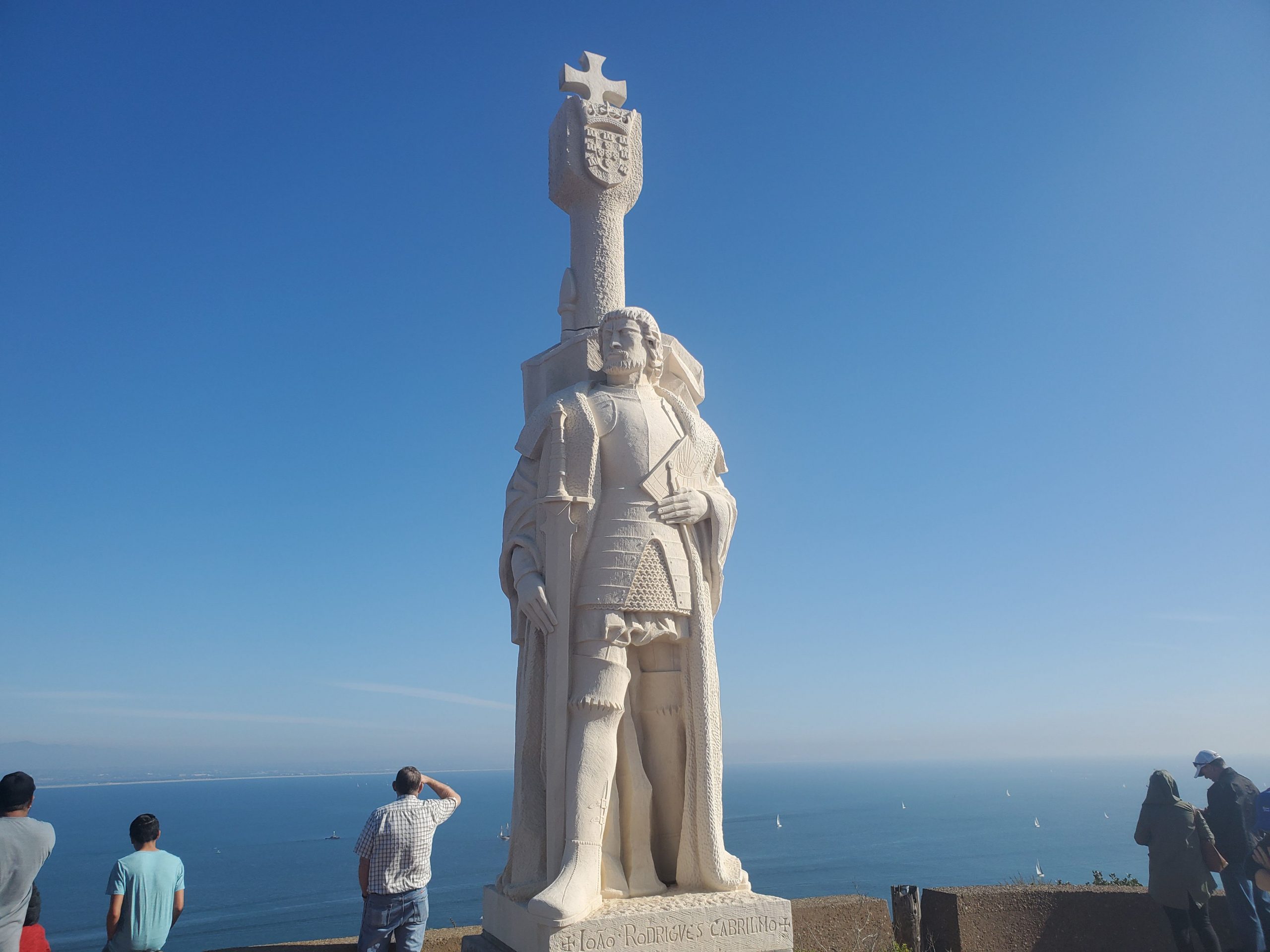
A large statue of Cabrillo now overlooks San Diego Bay near the visitor’s center. However, historians are not sure exactly where Cabrillo landed. Most think it was on Ballast Point, an area below and to the north of the current monument. Ballast Point is currently part of the Naval Base Point Loma and also the name of a popular San Diego brewery.
Cost and Logistics
It costs $20 per vehicle to enter the Cabrillo National Monument ($15 motorcycle). Walking or biking in costs $10 a person but a group of 4 can get in for $20. An annual pass to Cabrillo National Park is $35 and includes a vehicle and its passengers.
Entry is included with an annual National Park Pass. This pass costs $80. People over the age of 62 can get a lifetime pass for $80. U.S. Military and families with a 4th grade student get a free pass.
Walking or biking in will not be an option for most visitors. There is only one road into the park and there is extremely limited parking on the side of the road. Biking is popular but it is a fairly strenuous bike rider. The San Diego Reader published a 16-mile bike ride to Cabrillo.
The monument is open from 9 to 5.
Note that you may see an alert on the main web site that the Cabrillo Sea Cave is closed. This area has been closed since the 1980s so this is not anything to be alarmed about.
The entrance leads to a large parking area by the Visitor Center. Note that if you are planning to go to the tide pools, it is a separate location. The tide pools are only accessible by car. If you are going to the tide pools turn right directly after the entrance. Parking at the tide pools is limited and the road will be closed off when parking is full.
One general note is that on weekends lines to enter Cabrillo National Monument can be long. A major advantage of the National Park Pass is they have a dedicated lane that allows one to bypass the lines.
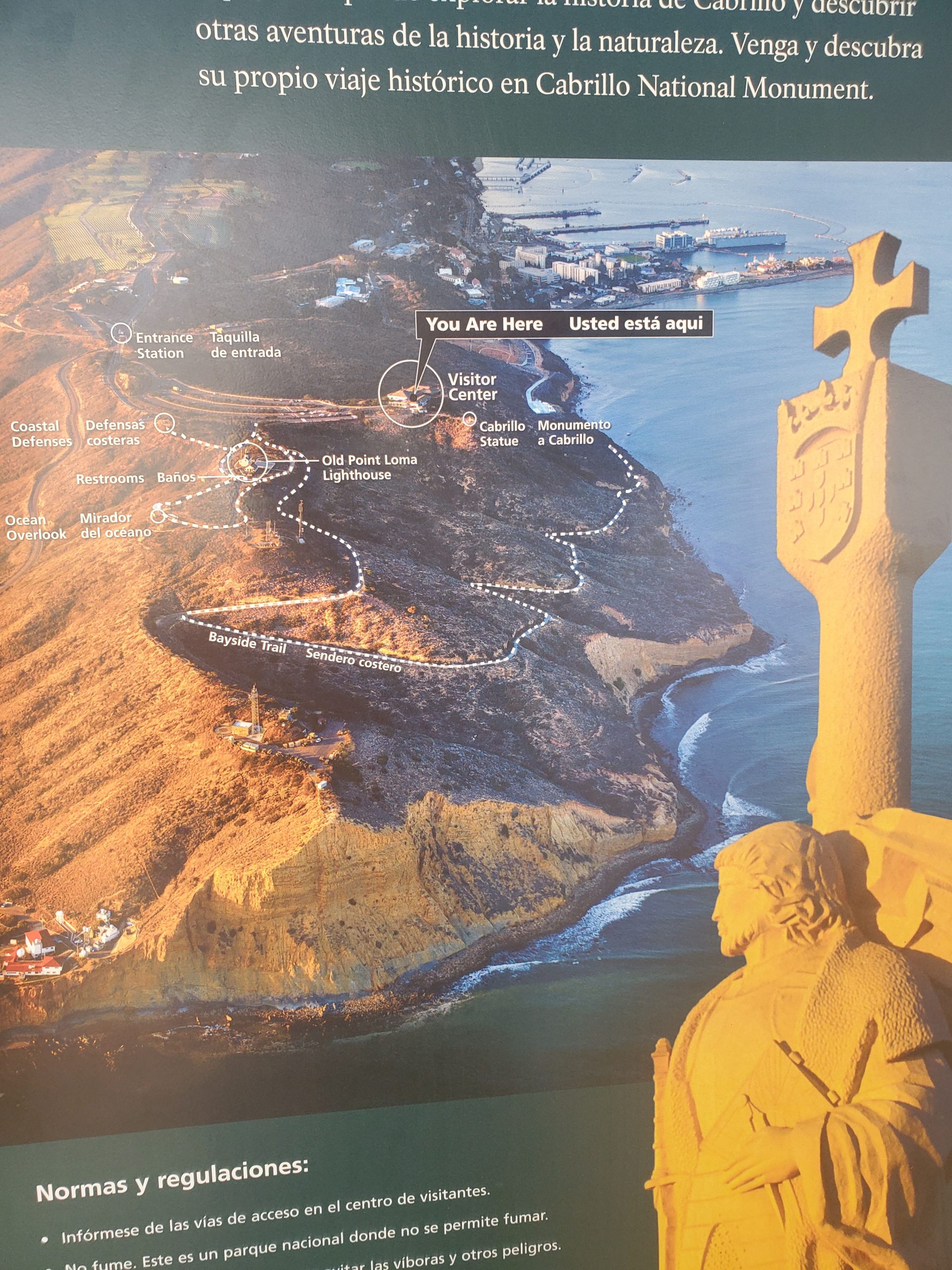
Visitor Center
Most people will start a visit to Cabrillo National Monument at the Visitor Center. The Visitor Center overlooks San Diego Bay directly next to the parking lots.
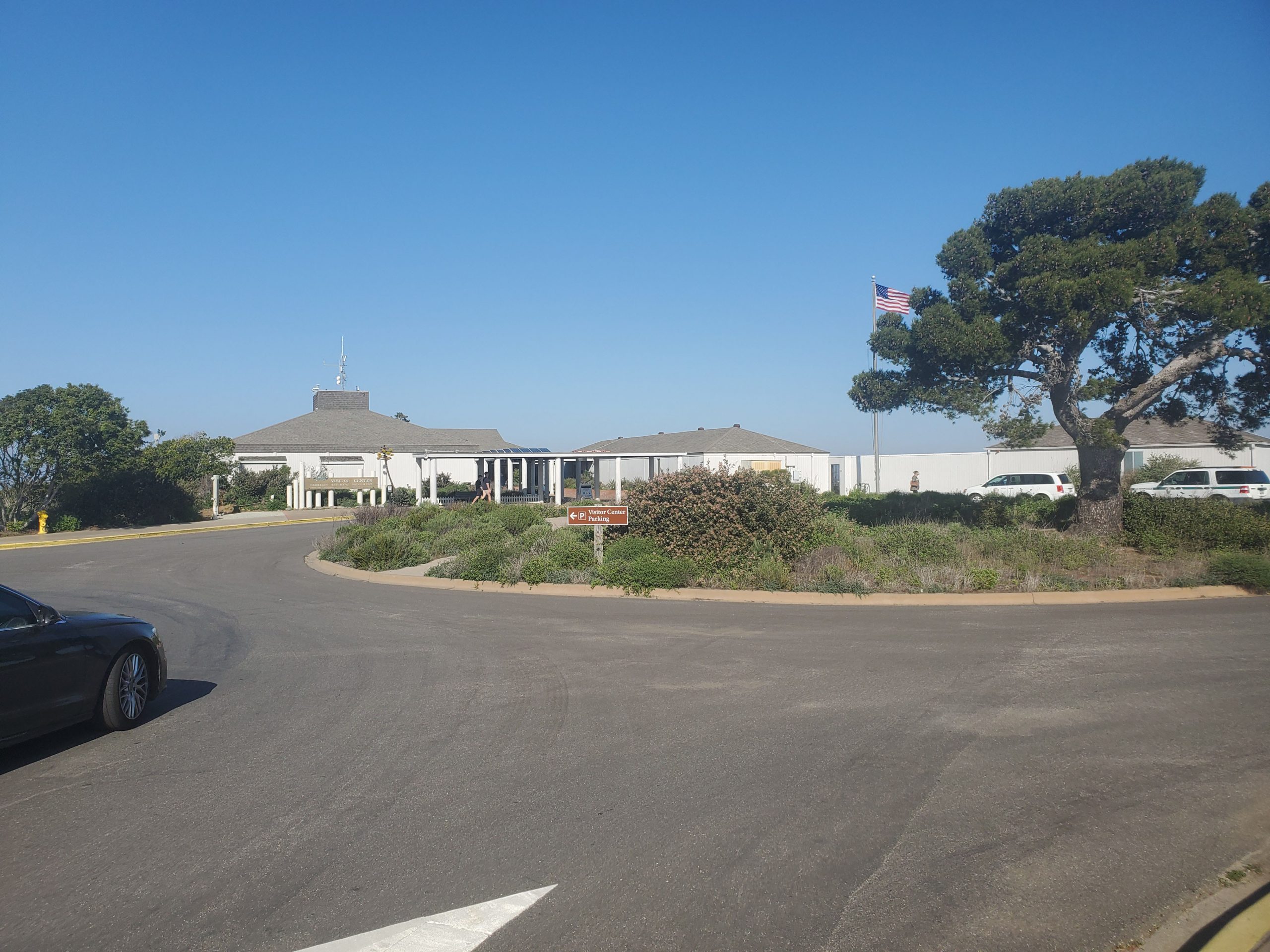
The Visitor Center has movies, exhibits and a large gift shop. The exhibits focus on Cabrillo’s landing. The rotating movies include short films not only about Cabrillo, but also about whale watching and the general landscape of the area.
There are restrooms and some vending machines but no food service. However, there are plenty of spots to eat if you want to bring a picnic lunch.

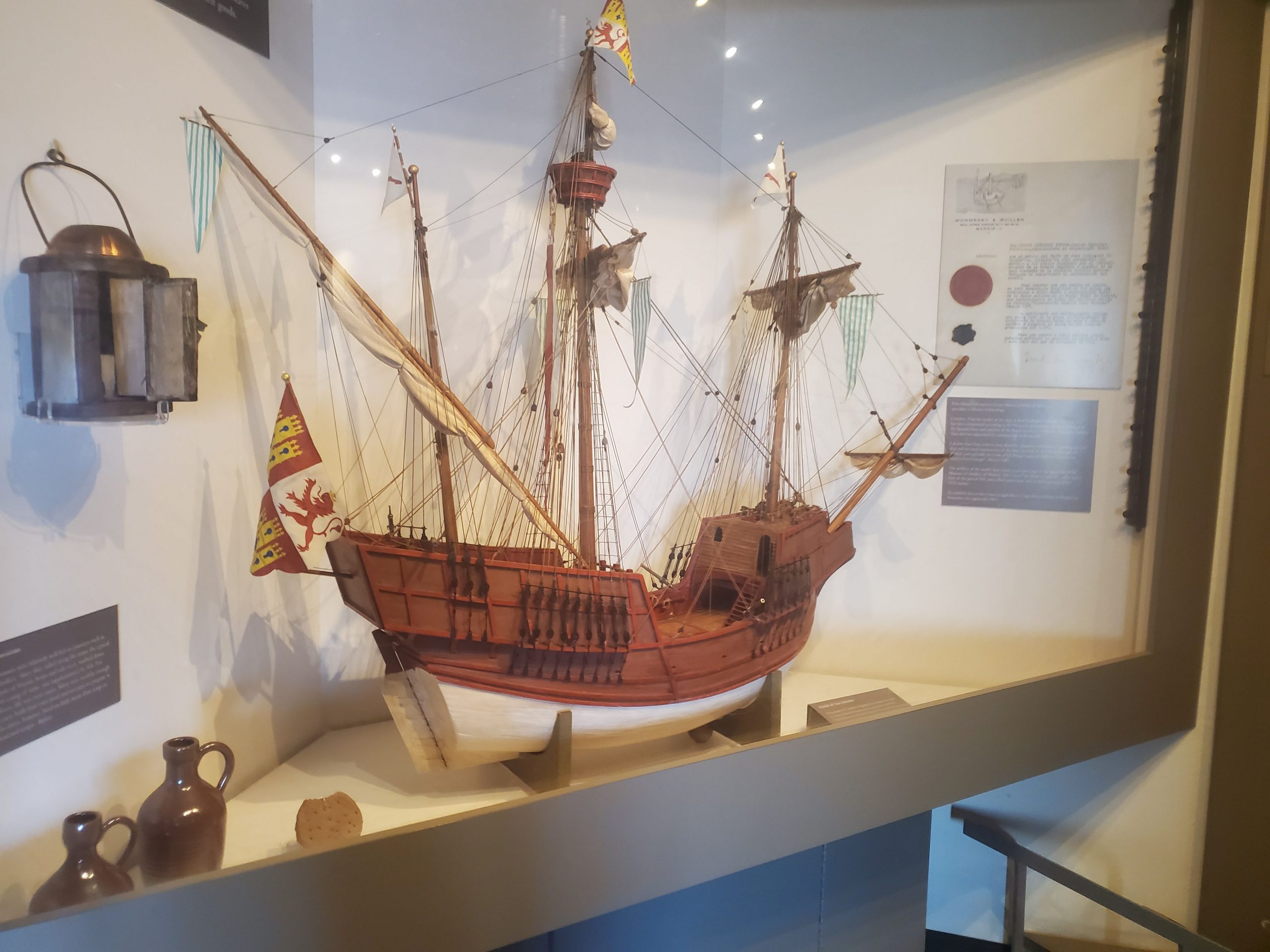
There are several outdoor viewing areas around the Visitor Center. Near the entrance is a statute of Cabrillo that has served as a classic San Diego photo op for years. Outside the gift shop is a patio area with views to where it is believed Cabrillo landed in San Diego. There will often be interpreters dressed as a Spanish explorer of the 1500s.
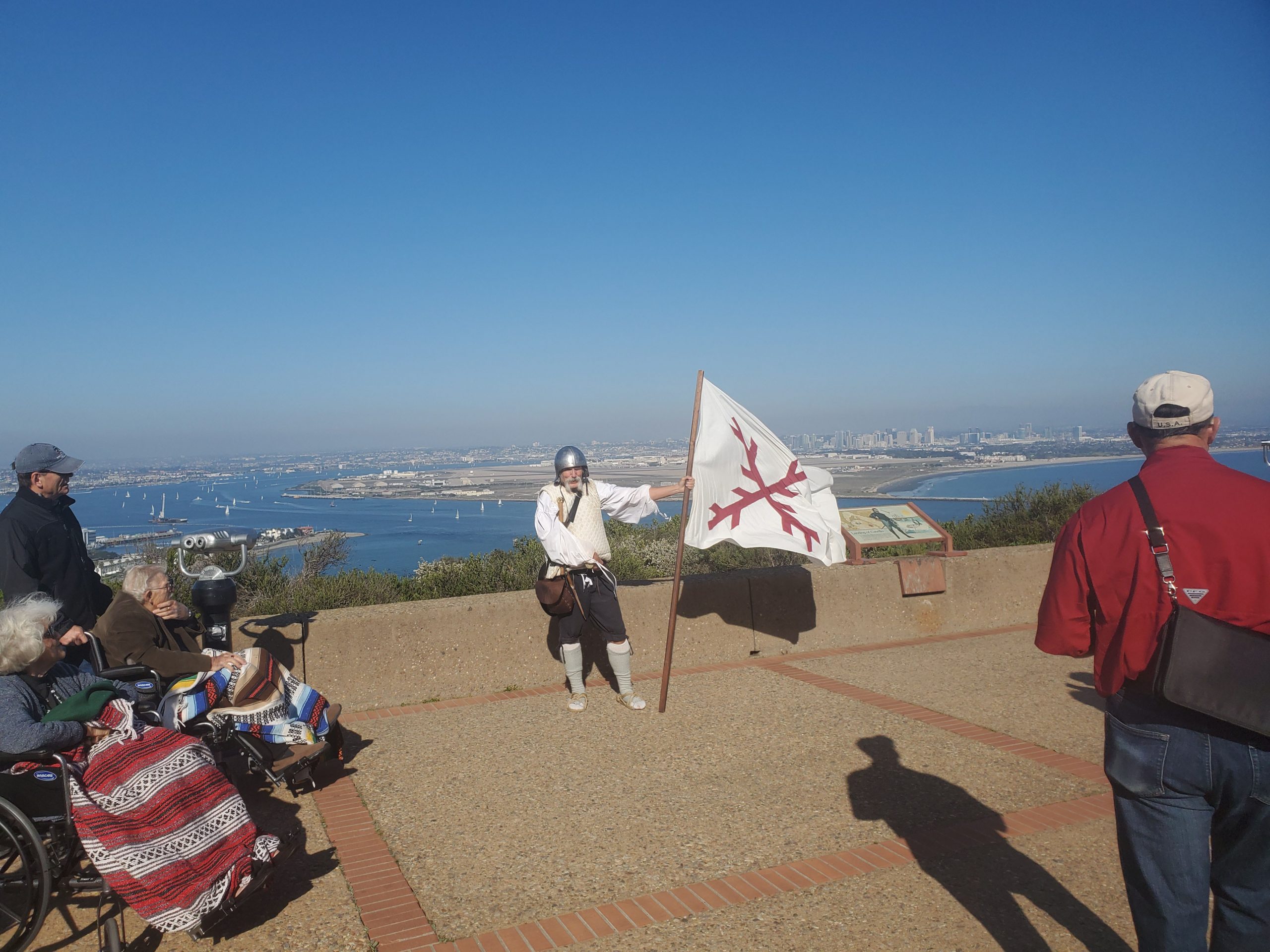
The Visitor Center is also where you can find a schedule of daily programs. There is much more to explore by taking a short walk up towards the lighthouse.
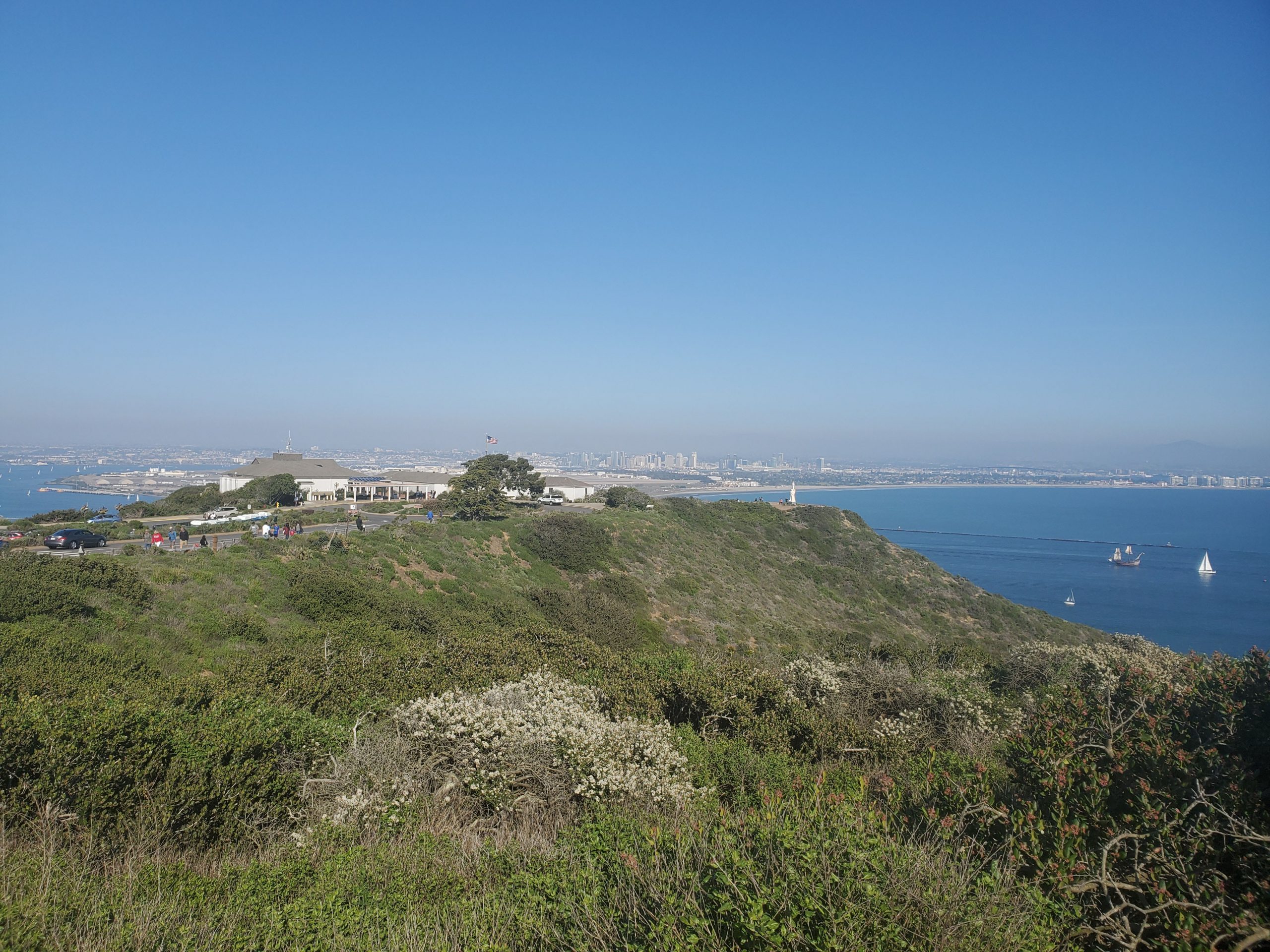
Lighthouse
The Cabrillo National Monument Lighthouse is a key attraction at the park. The lighthouse is a short walk up a slight hill from the Visitor Center along a well-paved pathway.
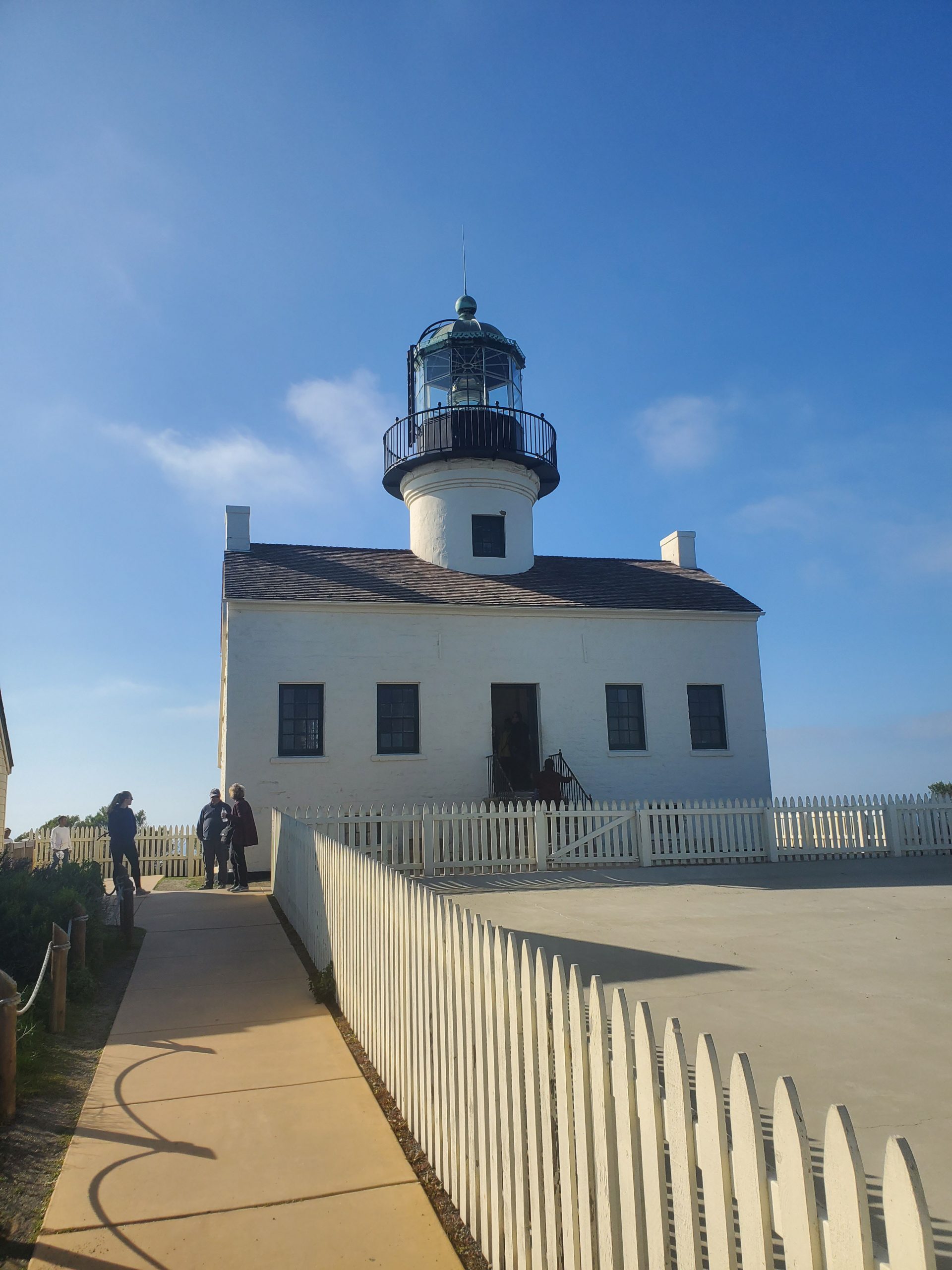
The lighthouse goes by the official name of the Old Point Loma Lighthouse. This is an indication that the lighthouse has not been officially used since 1891.
The Old Point Loma Lighthouse went into operation in 1855 at which time it was referred to as the highest lighthouse in the United States. This is clearly seen today as the lighthouse sits over 400 feet above the Pacific Ocean and San Diego Bay.
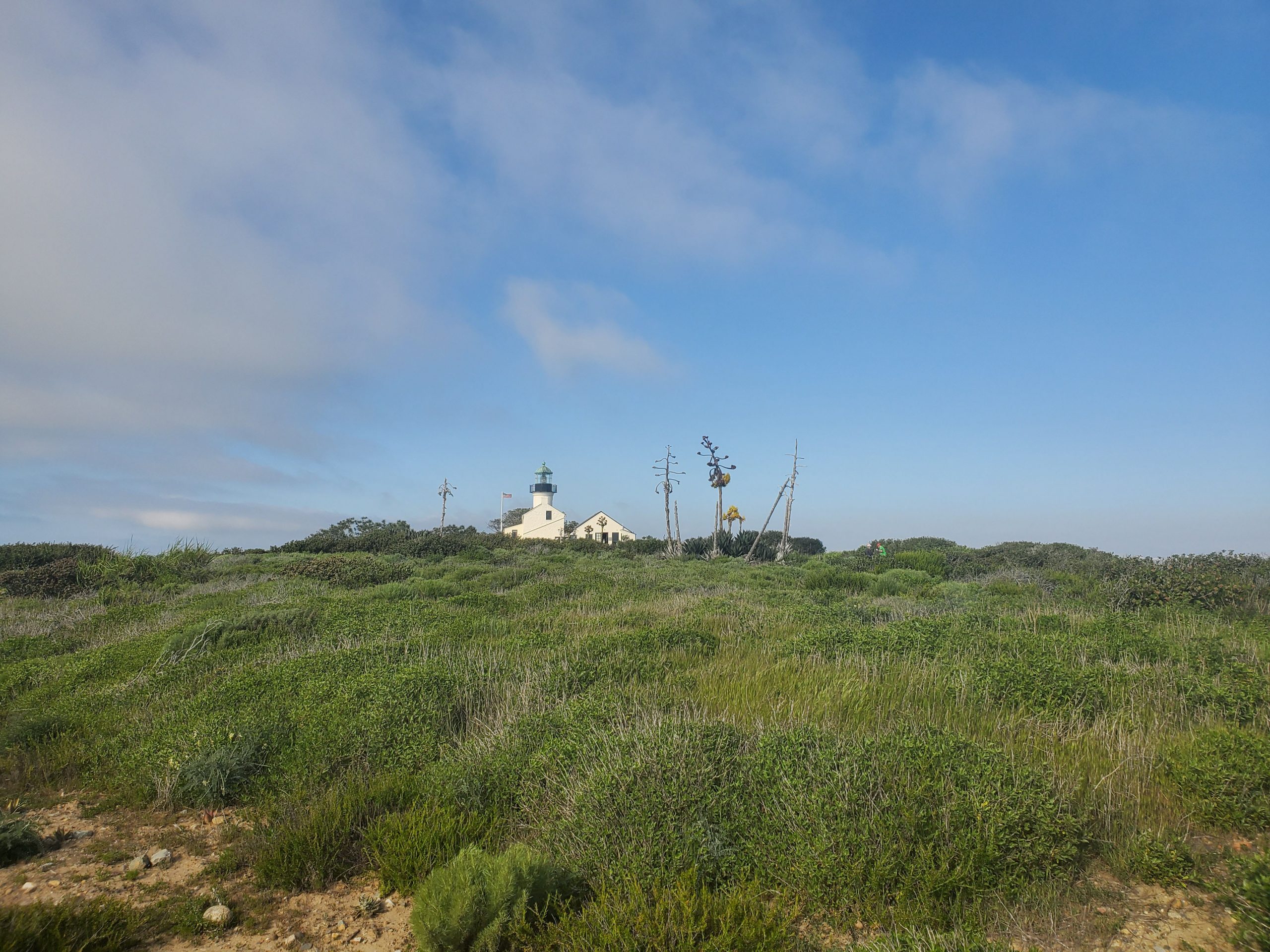
Unfortunately, this height made it ineffective as a lighthouse. Often the area would be shrouded in fog, obscuring the light. New lighthouses were built at the bottom of Point Loma.
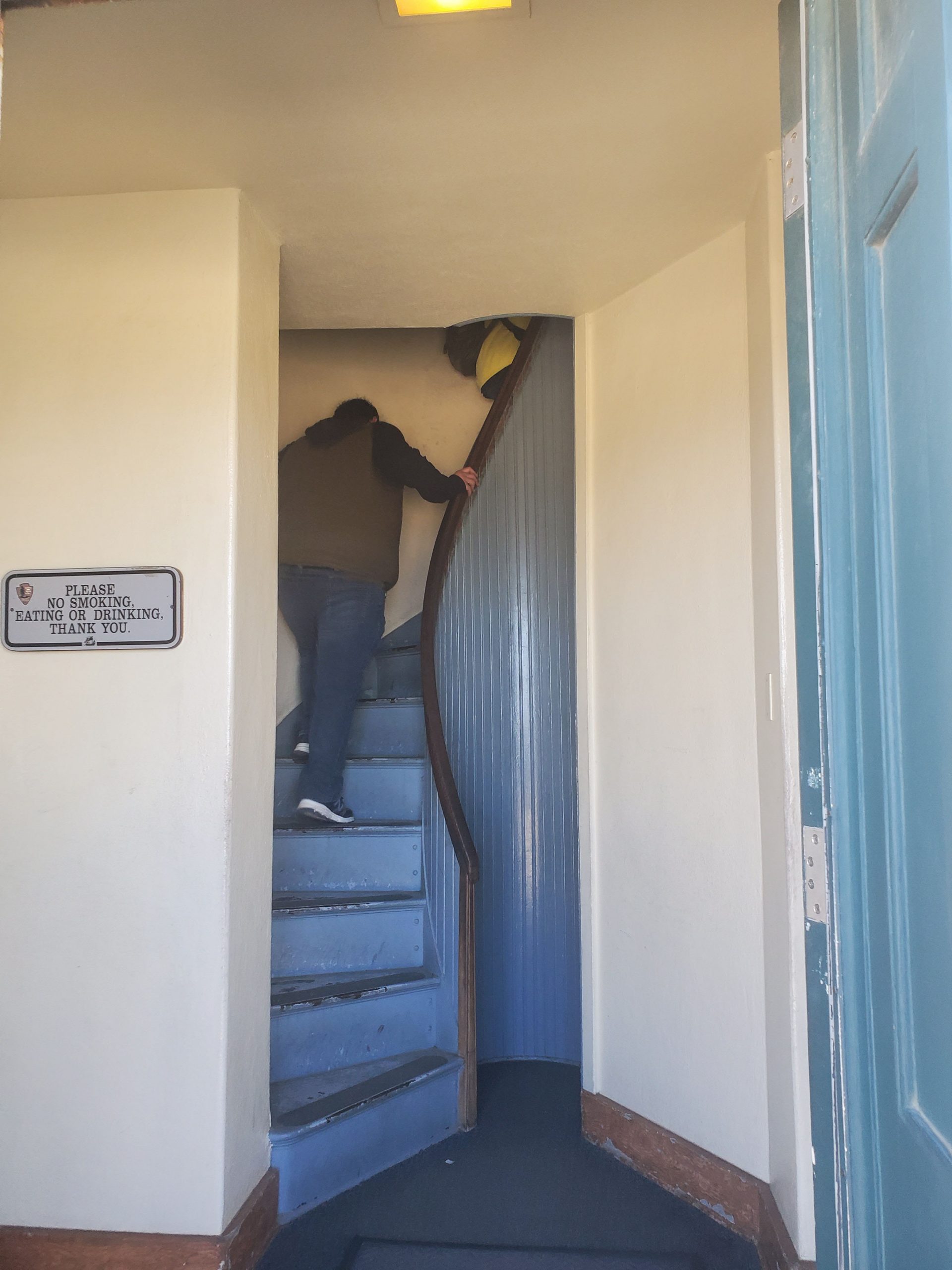
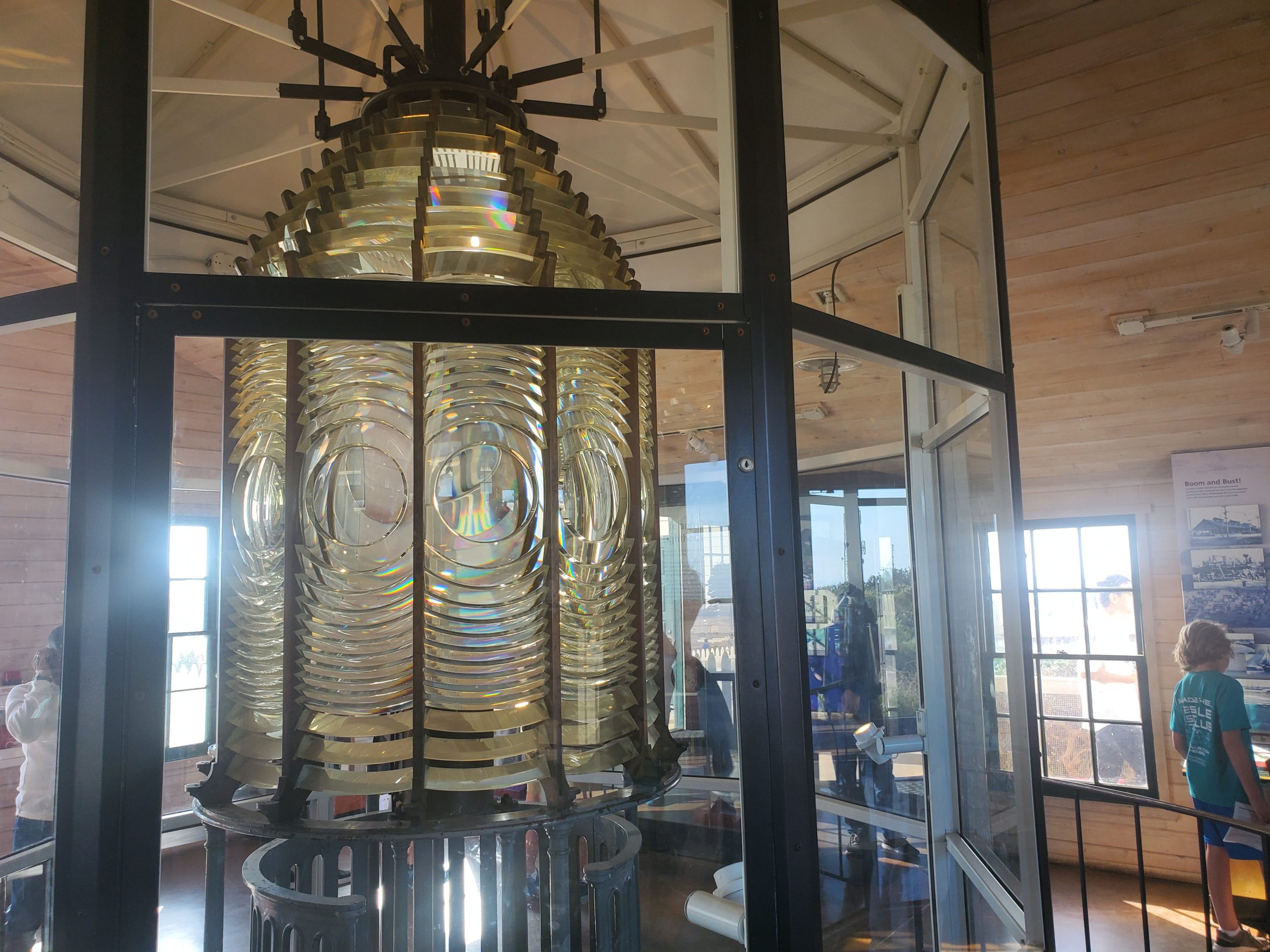
In the 1930s the Old Point Loma Lighthouse area was added to Cabrillo National Monument. Today visitors can climb up the lighthouse and also explore the surrounding exhibits that discuss the technology and history of lighthouses.
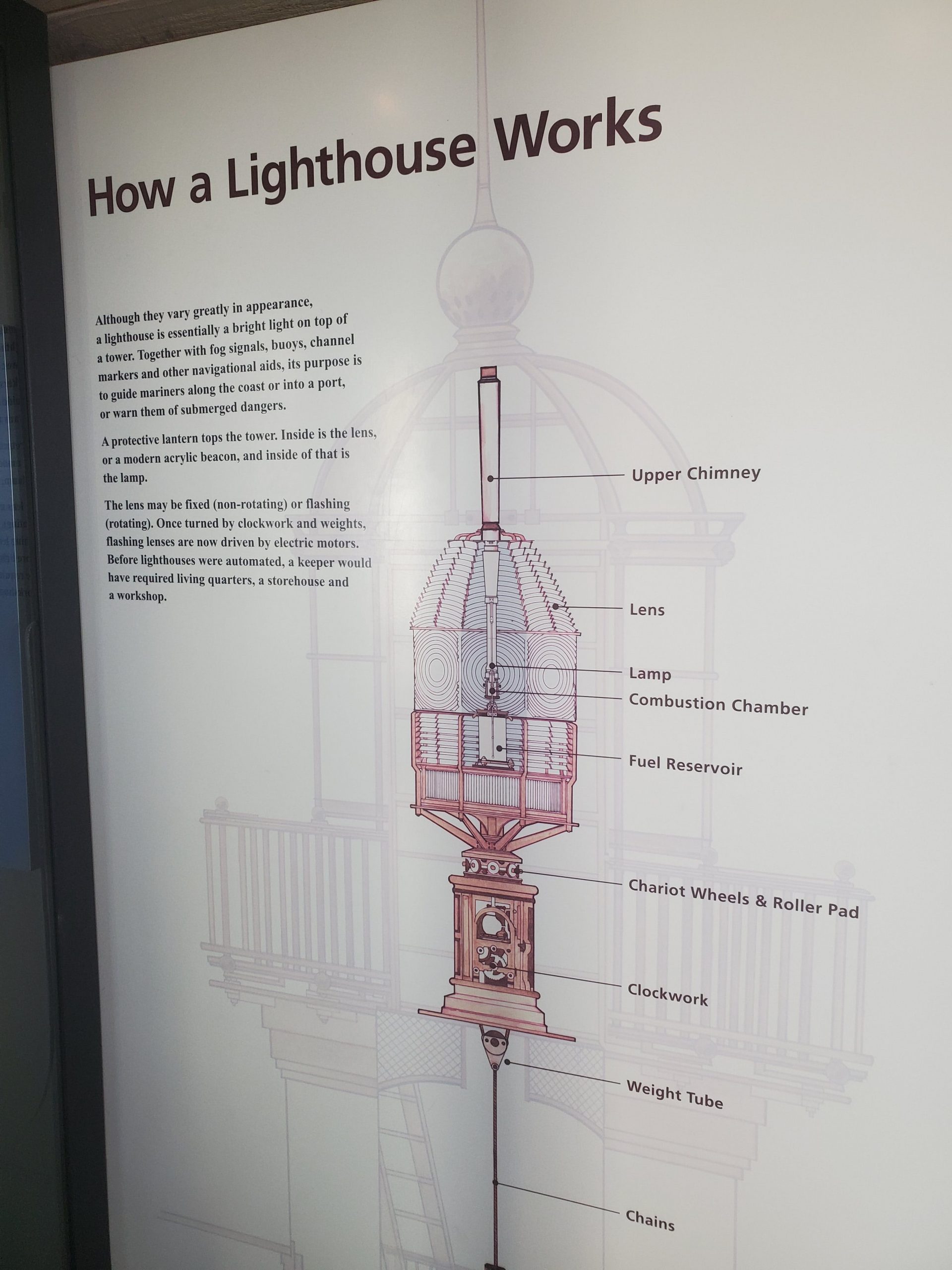
Of course, the views from the lighthouse are wonderful. This is right next to another major attraction at Cabrillo National Monument, whale watching.
Whale Watching

Whale Watching at Cabrillo National Monument is a seasonal activity. From December to March, gray whales migrating from the Artic to Baja California pass Cabrillo. The peak time is mid-January.
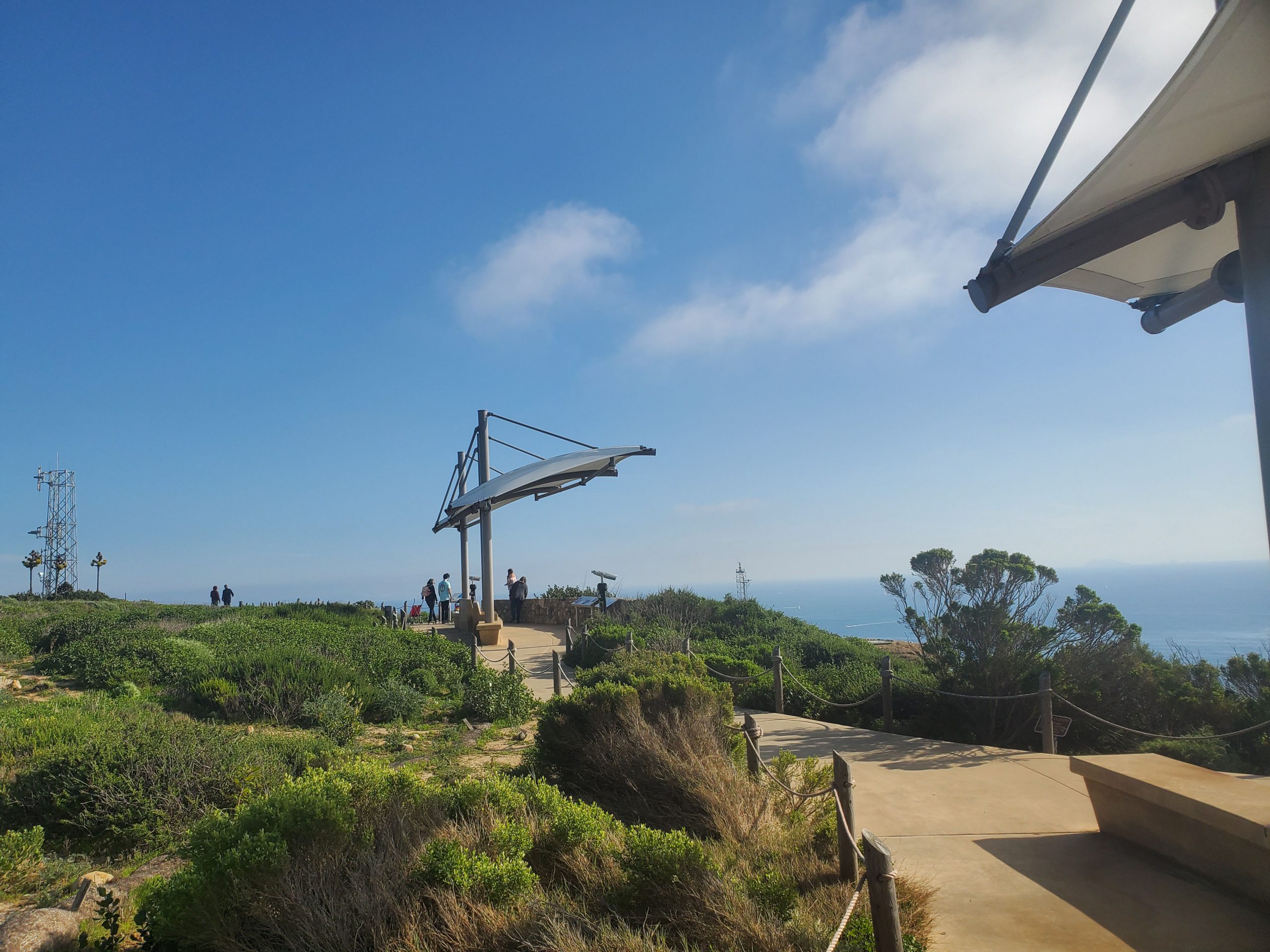
Right by the Old Point Loma Lighthouse there are observation decks for viewing the whales. It is best to bring your own binoculars, but there are some available for checkout at the Visitor’s Center.

If you are really into seeing whales a whale watching tour is highly recommended. Note whale watching tours can be included with a Go San Diego Pass.
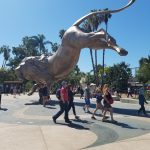
Military History
The Point Loma area is a key strategic location not only for defending San Diego, but also protecting the entire country. San Diego Bay is home to a large fleet of Navy ships and Point Loma guards the entrance to the bay. Cabrillo National Monument now has several displays showcasing the area’s military activity.
On the Pacific Ocean side of the Old Point Loma Lighthouse there are several bunkers built during World War I and II. These bunkers had gun batteries to defend the coast. You can find these bunkers starting directly below the whale watching station and along the trail back towards the parking lot
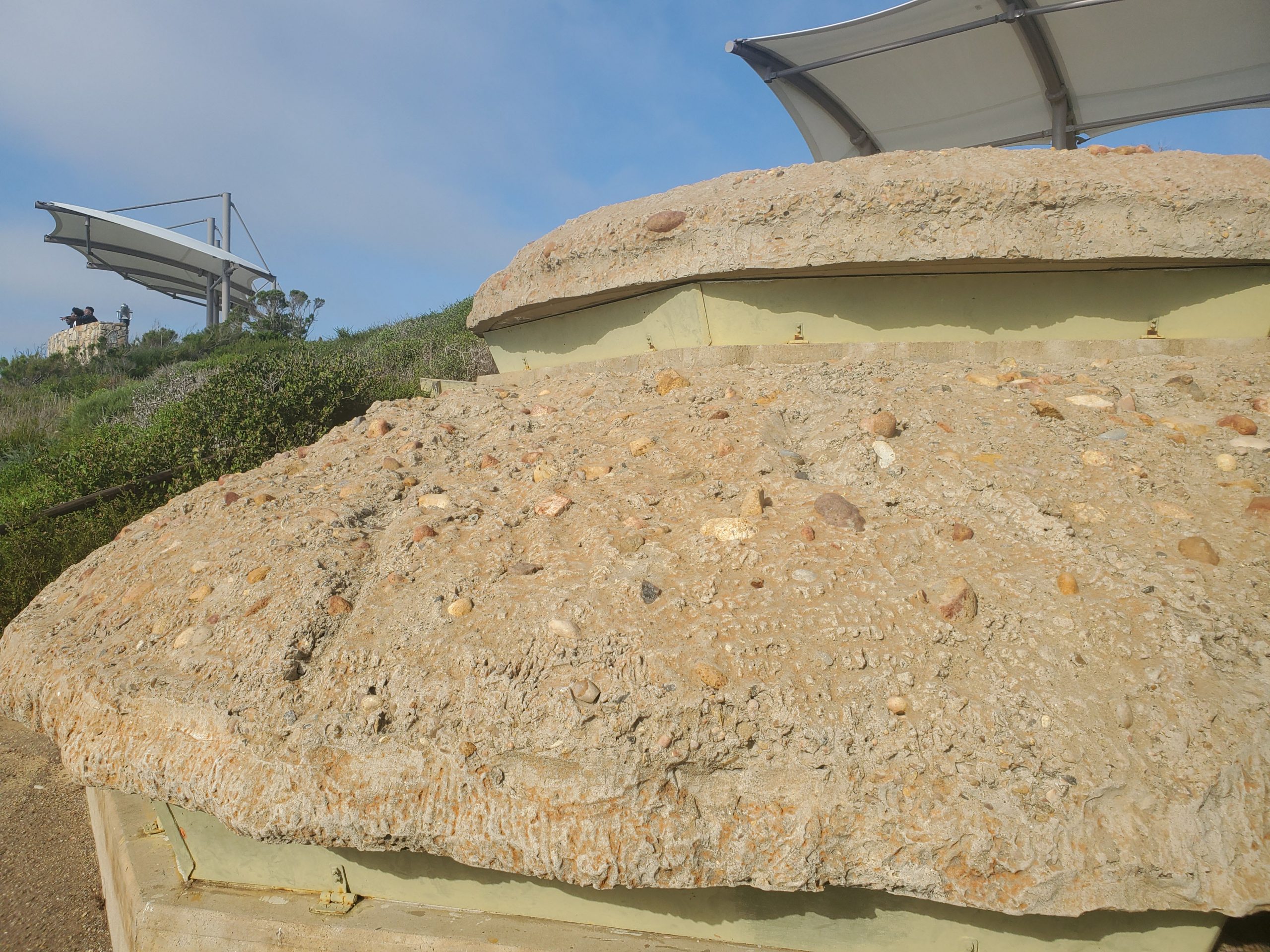
In some of these bunkers they have detailed displays and there will often be a veteran on-hand to answer questions. Right by the parking lot an old radio station has been developed into an exhibit entitled “They Stood Watch.” This gives a great overview of the general panic and concern that went on after the Japanese bombed Pearl Harbor in 1941.
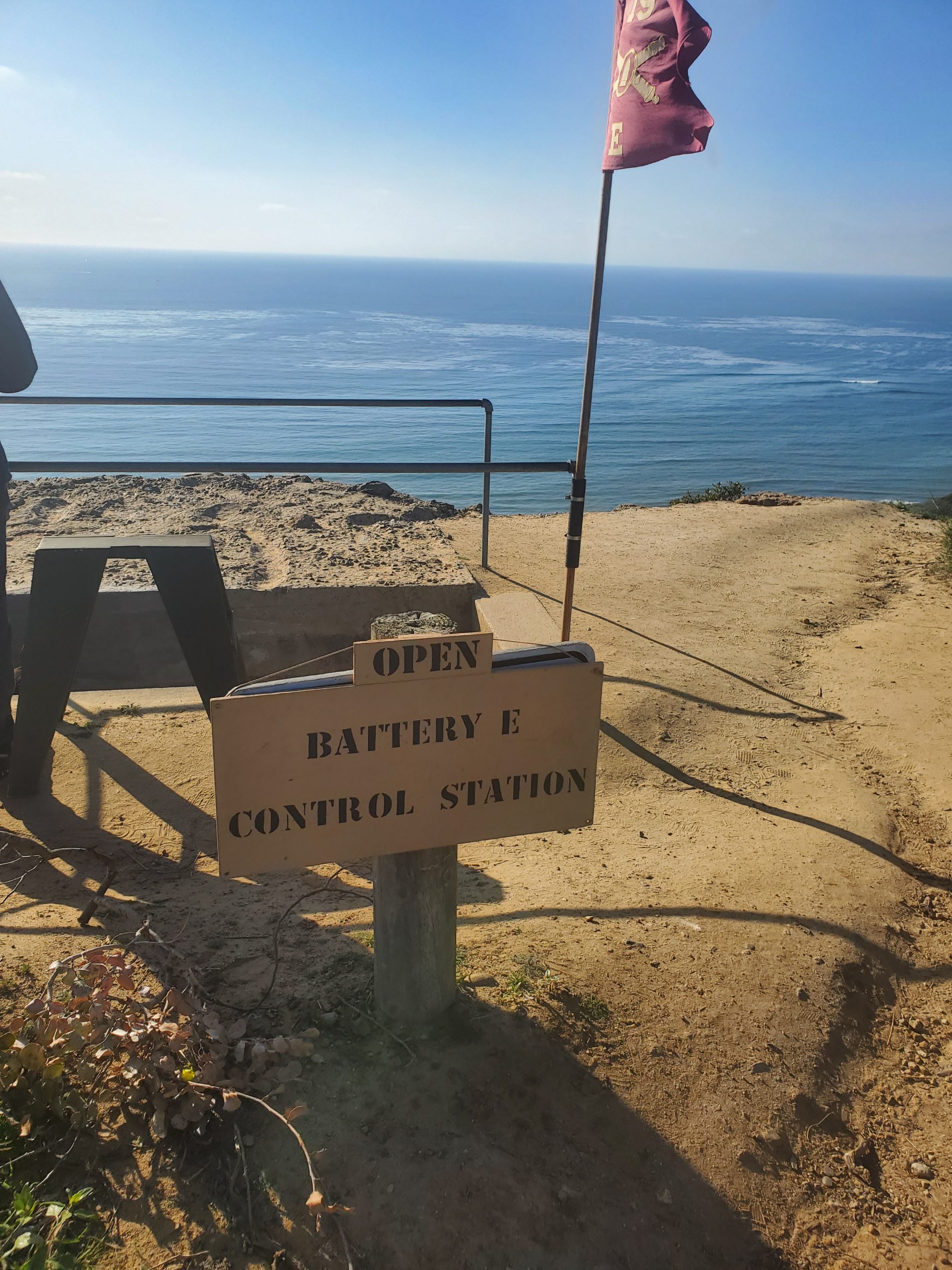
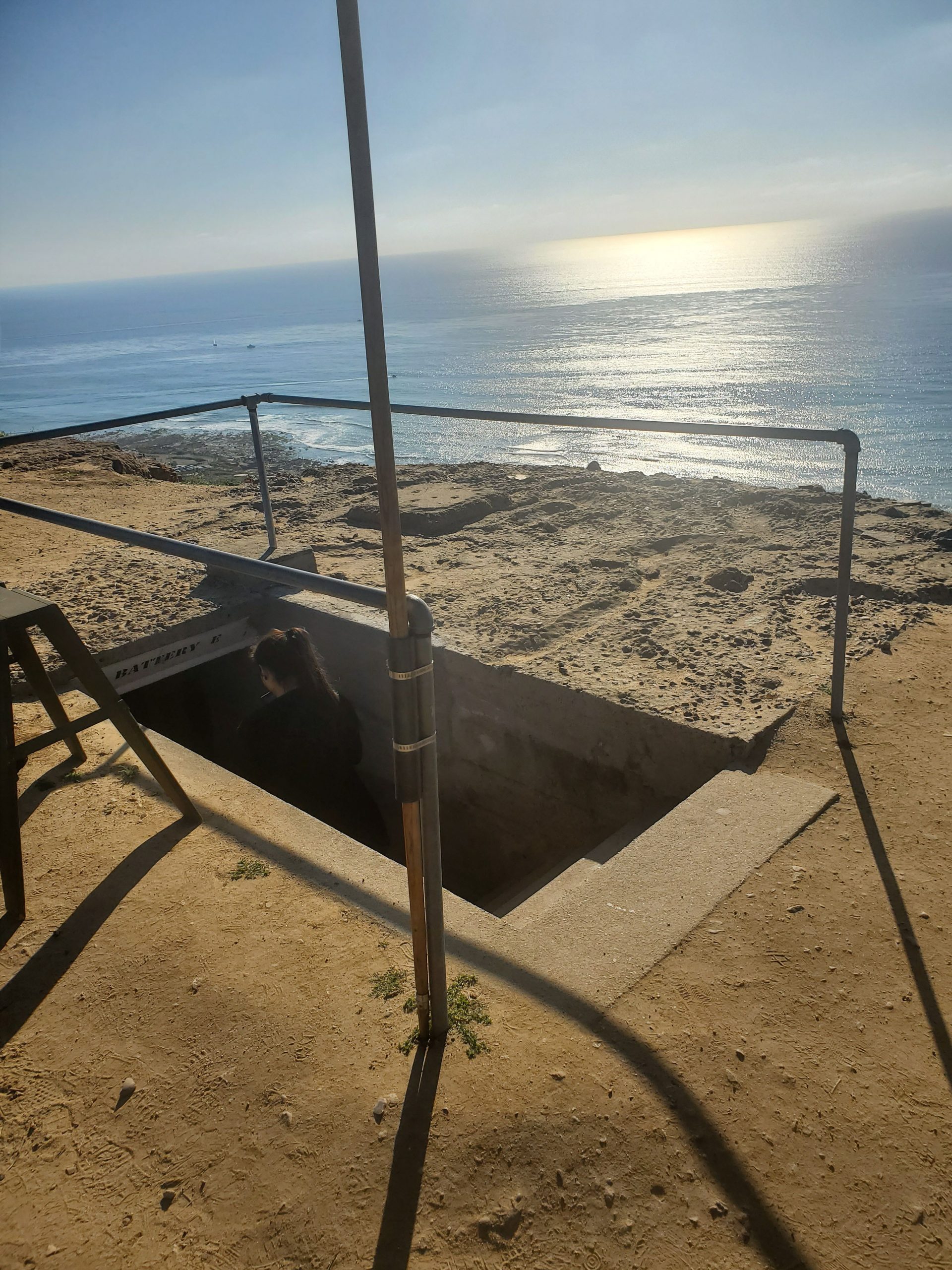
The military still has a major presence in Point Loma and the general San Diego area. Driving to Cabrillo National Monument passes several currently operating military bases. This area has been the site of important military operations since the 1850s.
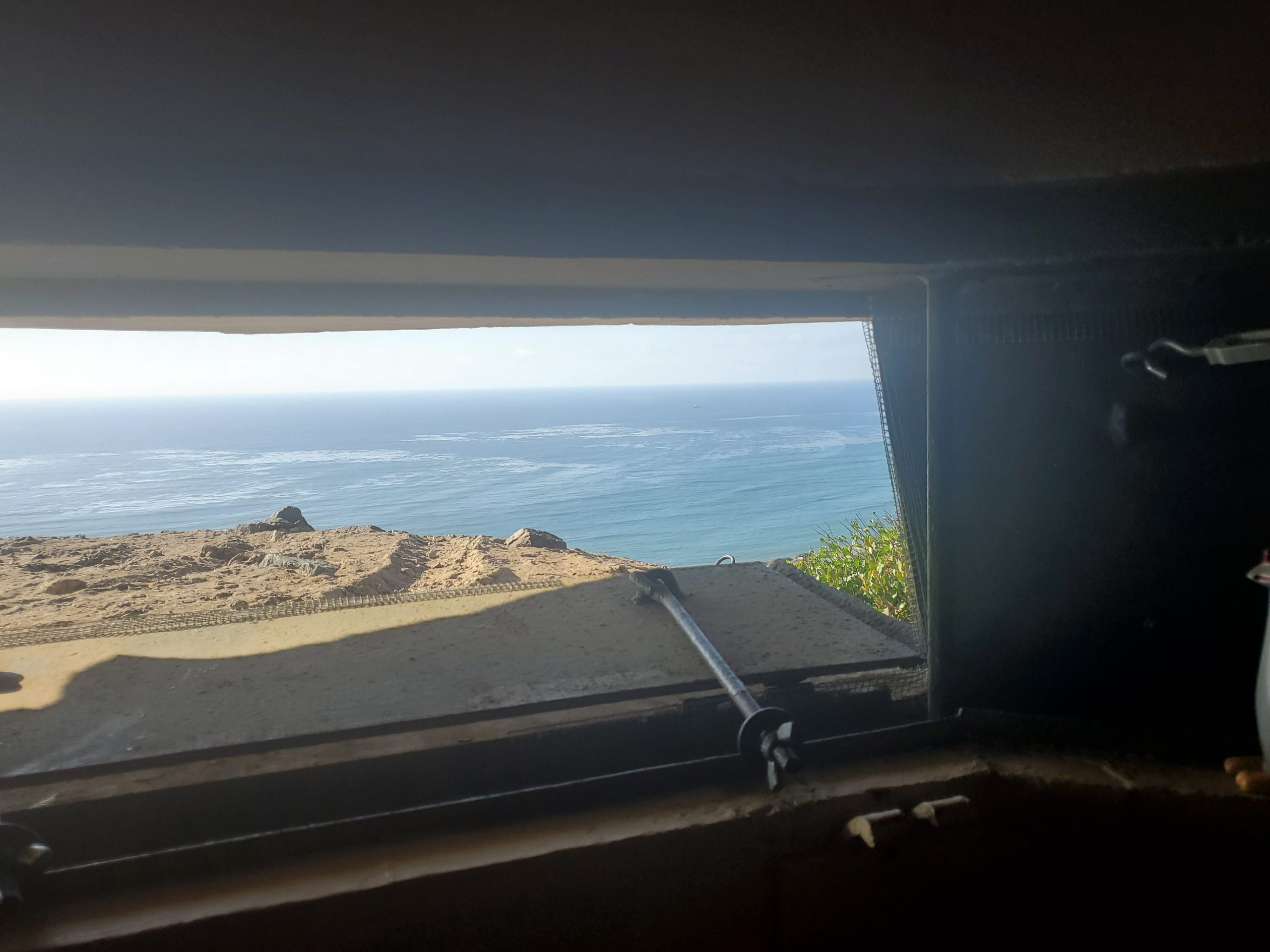
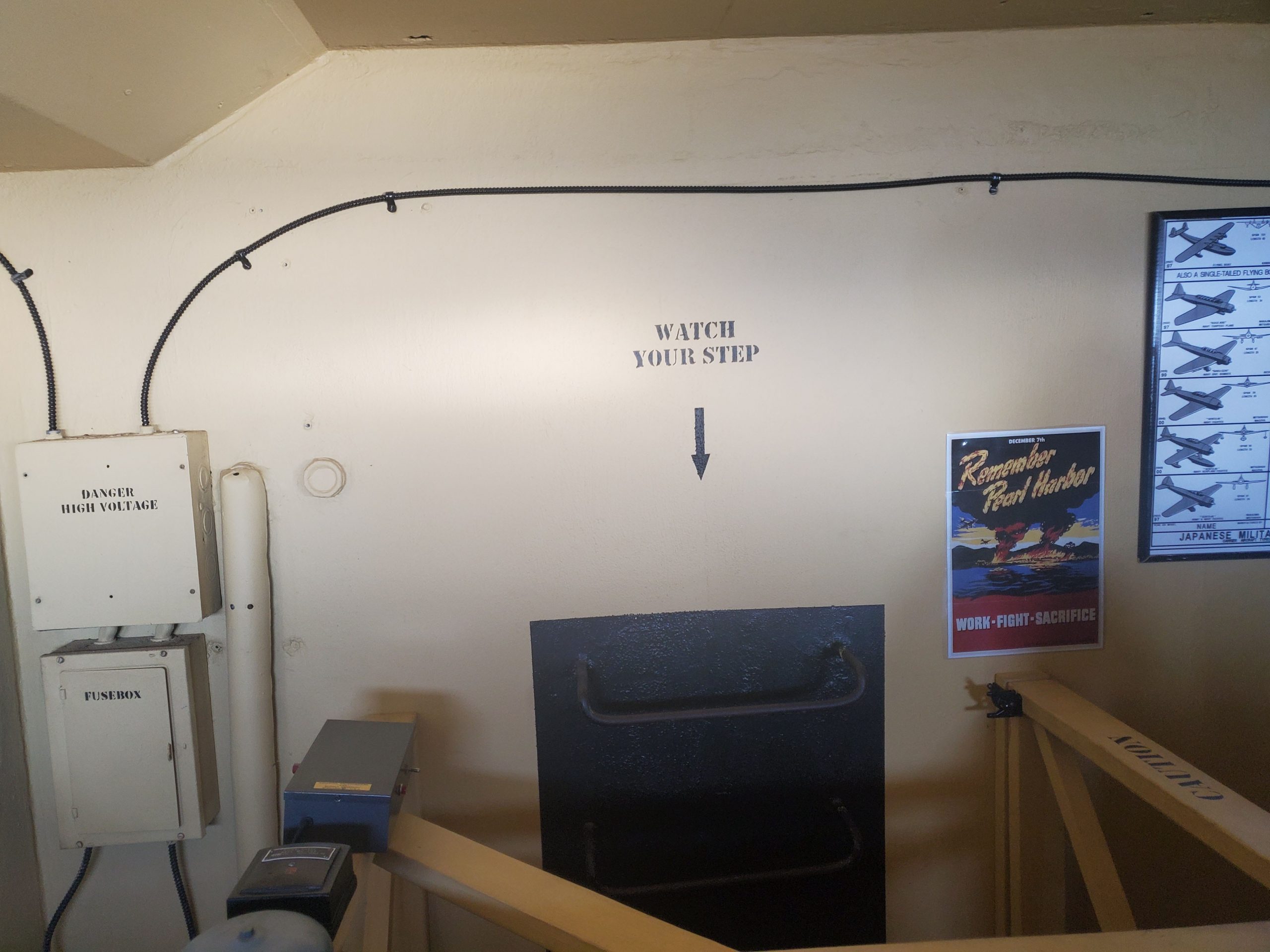
The drive into the park on Catalina Blvd/Cabrillo Memorial Drive goes directly through Naval Base Point Loma. The heart of this base is below the monument which serves as a key submarine base. The route also passes through Fort Rosecrans National Cemetery.
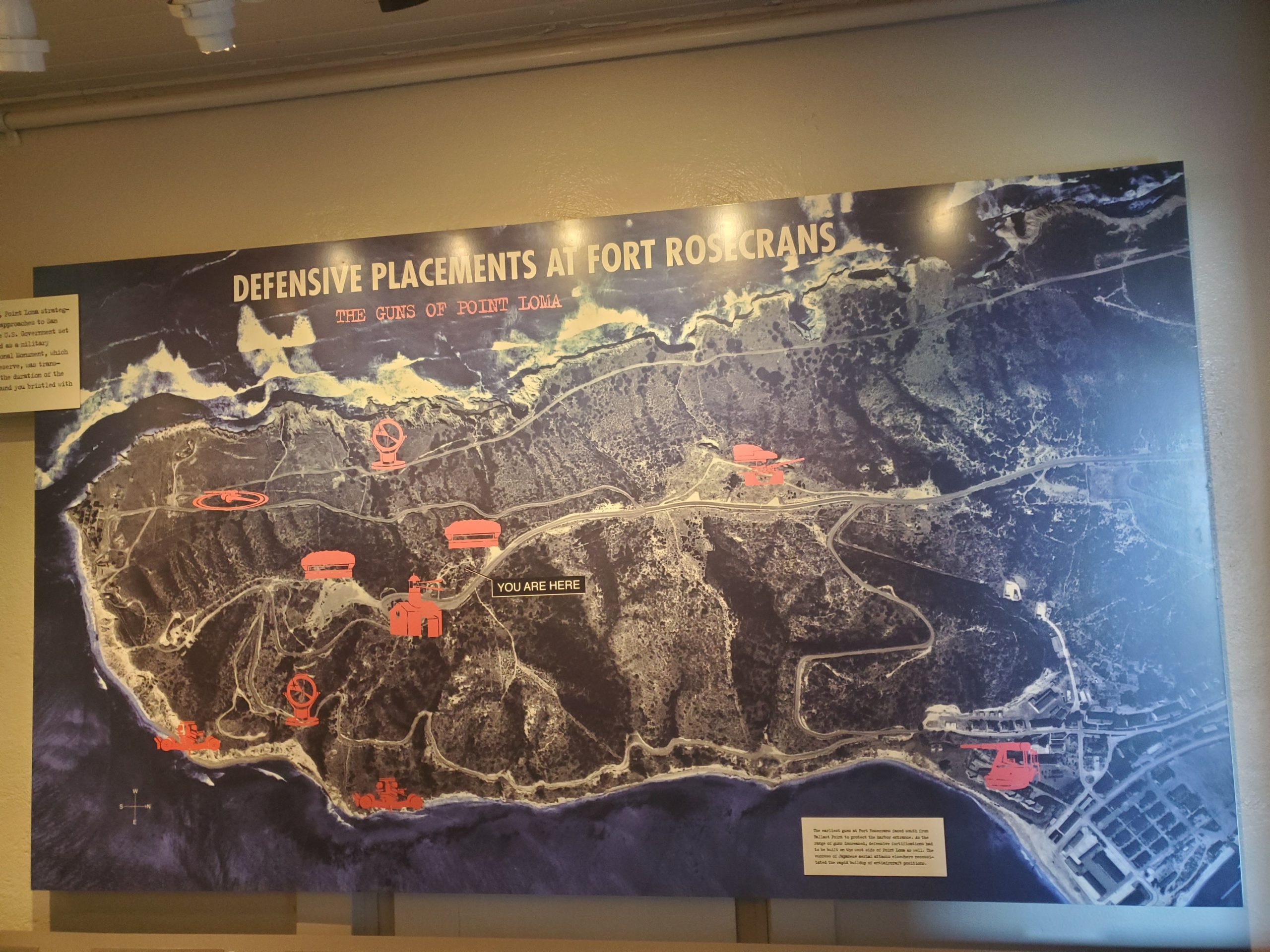
To get a closer view of both the Naval Base and some historic military installations on the San Diego bay side you can do the 2-mile walk down Bayside Trail.
Bayside Trail
Cabrillo National Monument is relatively compact and not designed for major hiking. However, the area does offer the 1-mile hike down the point on the Bayside Trail. We have a separate guide to this one-way hike (total of about 2.5 miles when you account for distance from the Visitor Center).

Tide Pools
The tide pool area of Cabrillo National Monument is a separate attraction in its own right. The tide pools are located along the Pacific Ocean down a steep road directly to the right after the entrance.
The tide pools are only accessible by car. If you are going to the tide pools turn right directly after the entrance. Parking at the tide pools is limited and the road will be closed off when parking is full. During the winter tides are at their lowest and visitors flock to the tide pools especially on weekends.
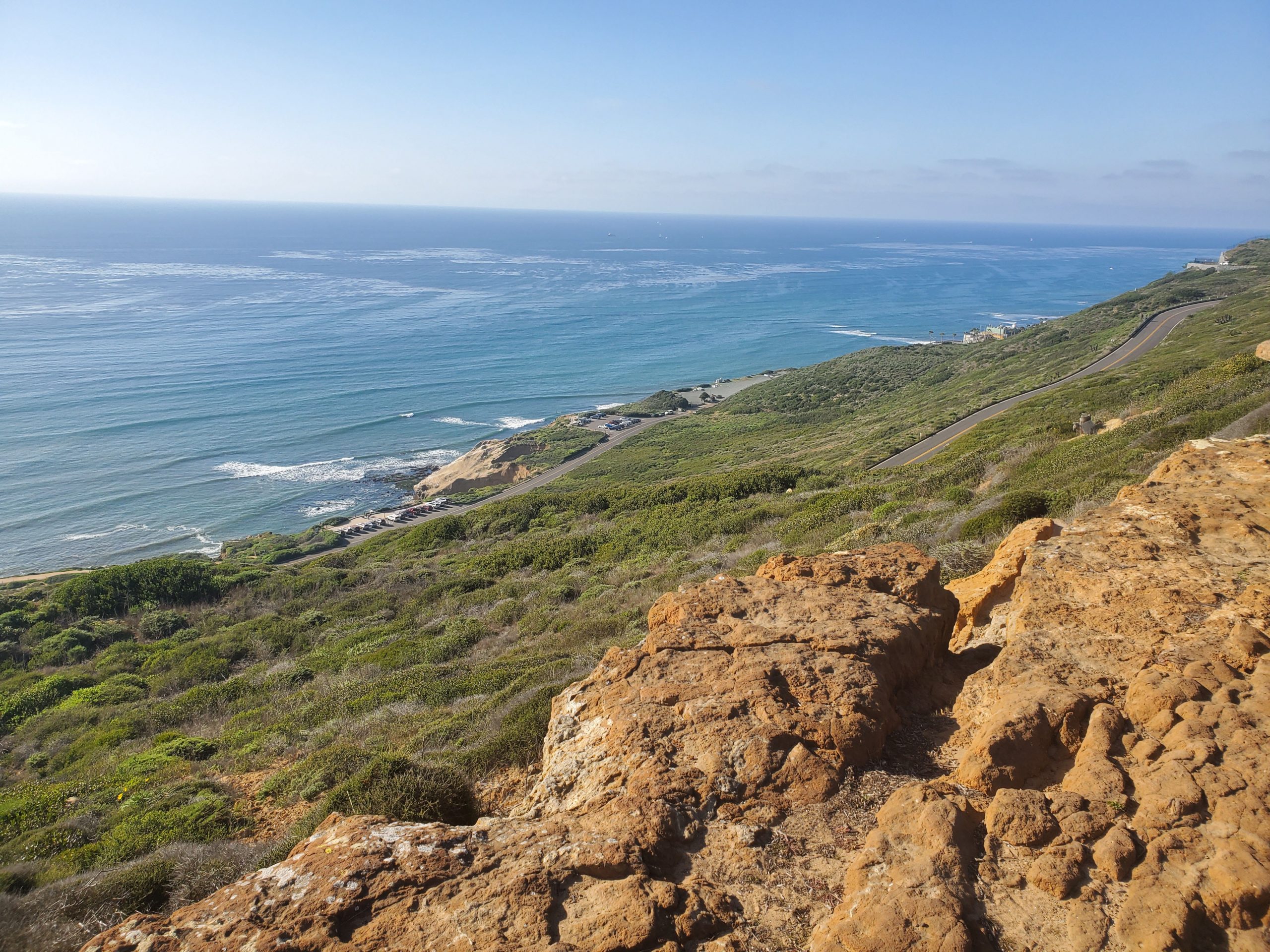
Just note that most times we visit Cabrillo National Monument we do NOT go to the tide pools.
We have a full guide to visiting the tide pools here.

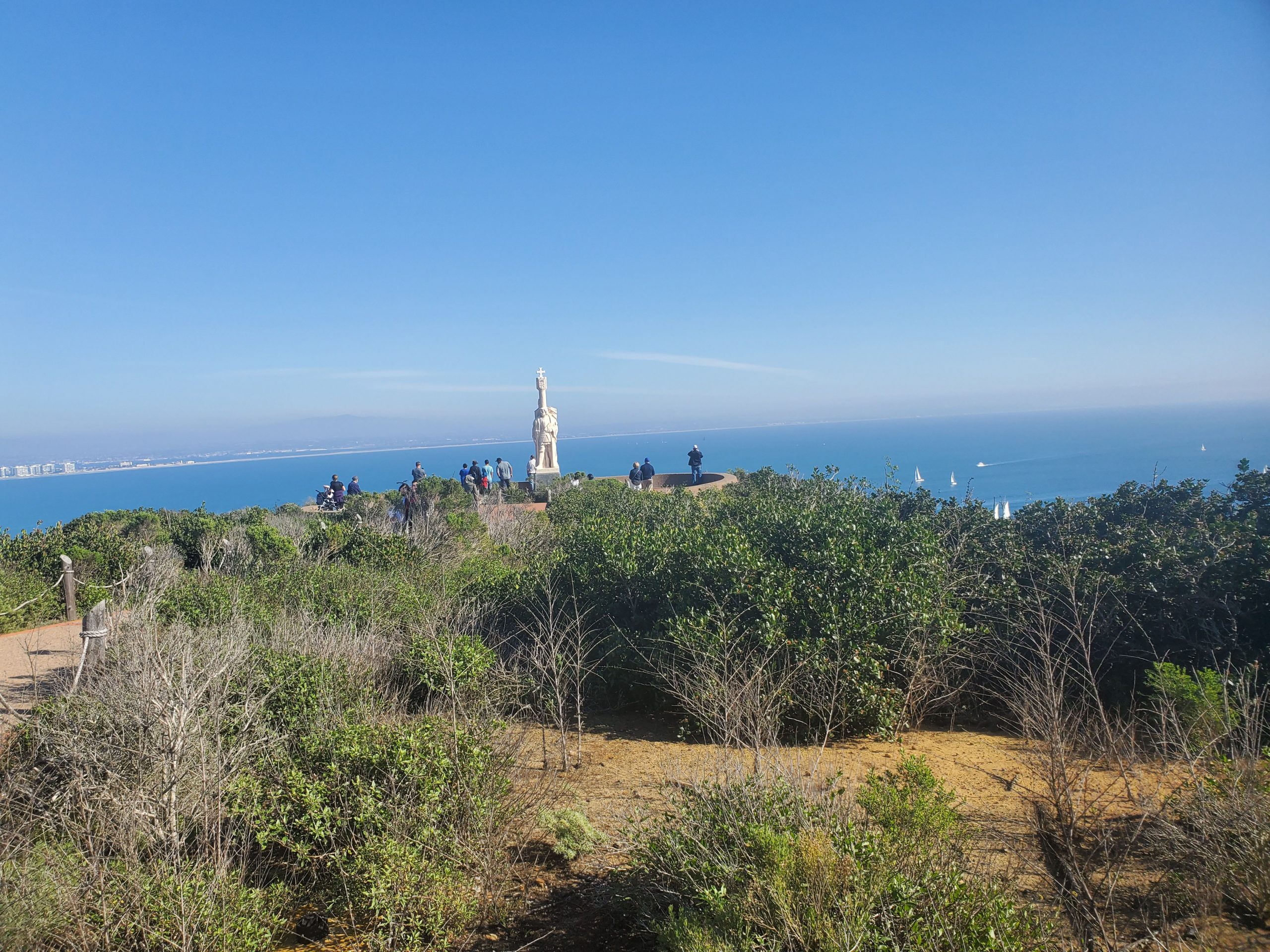
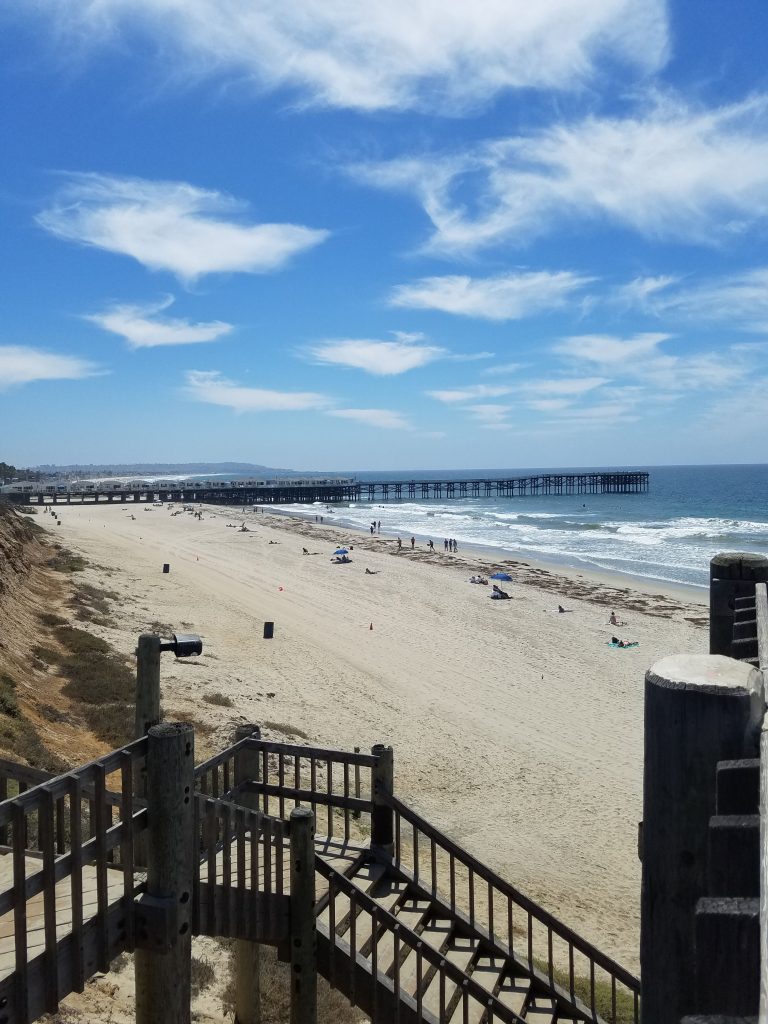
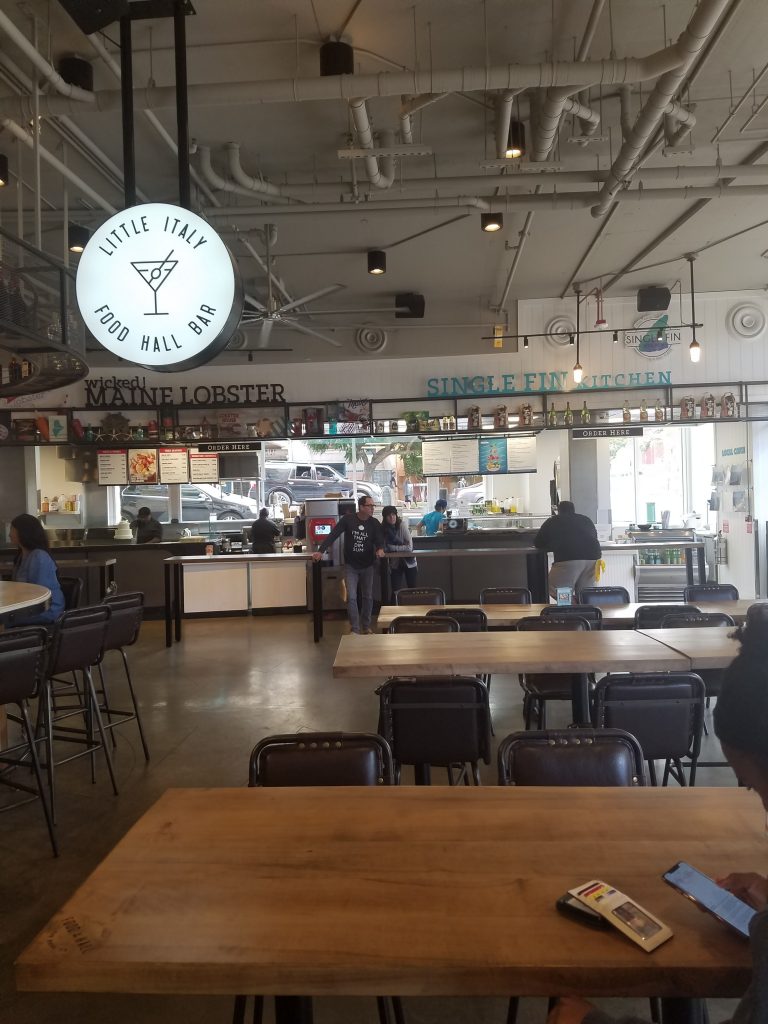
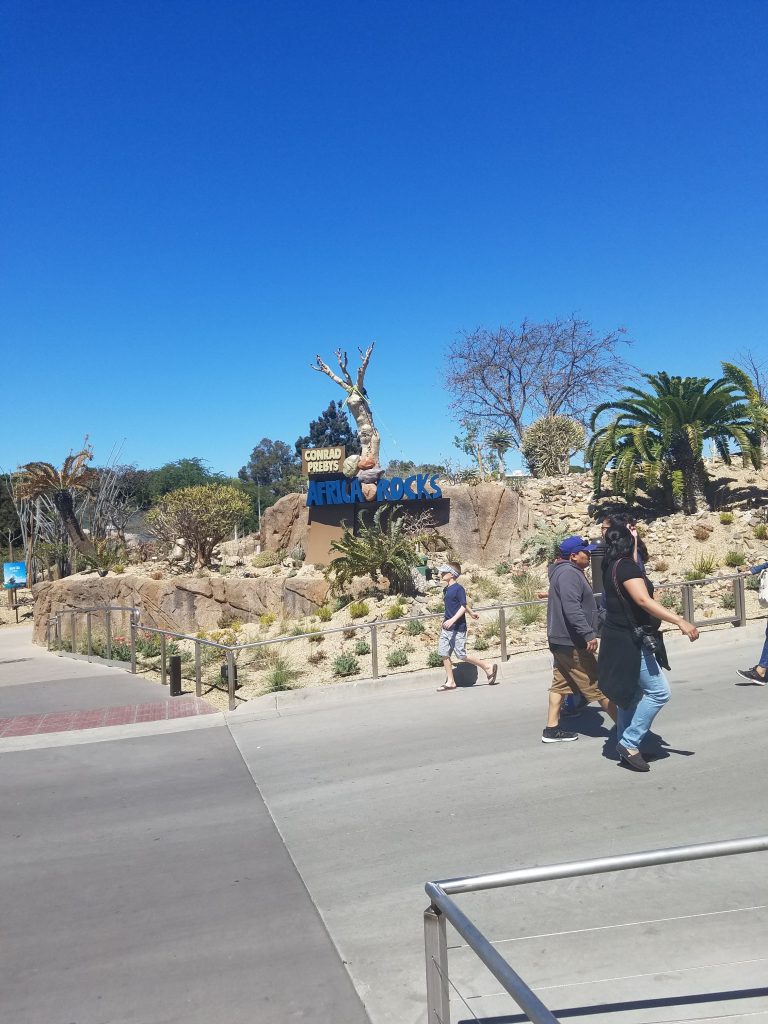
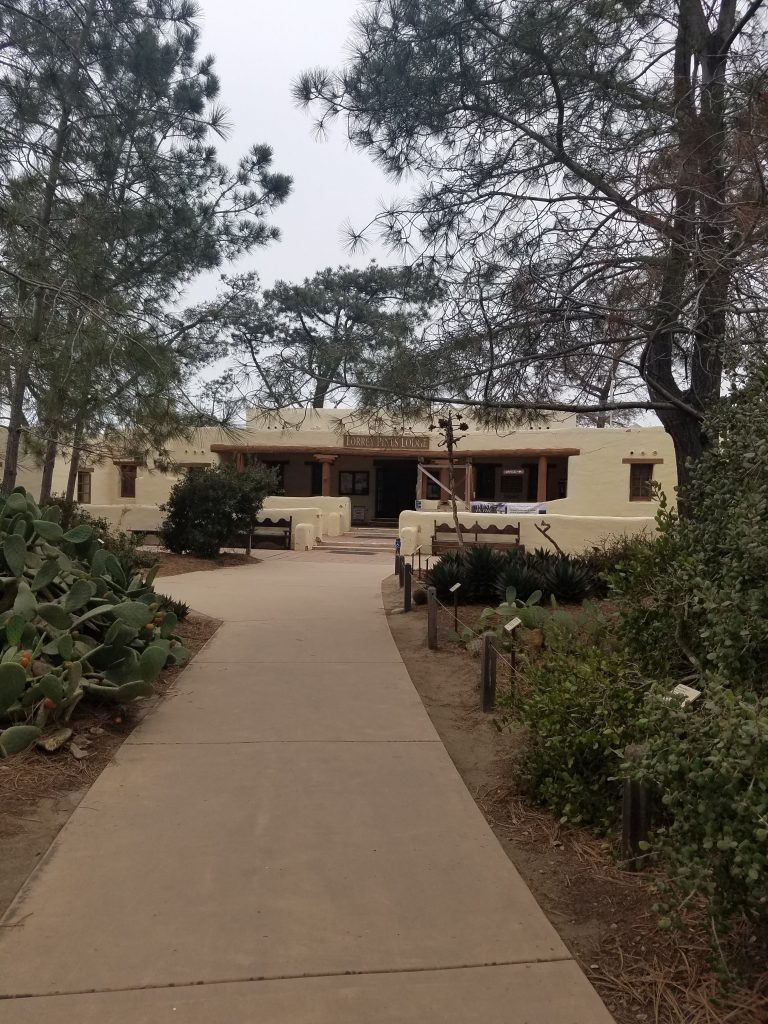
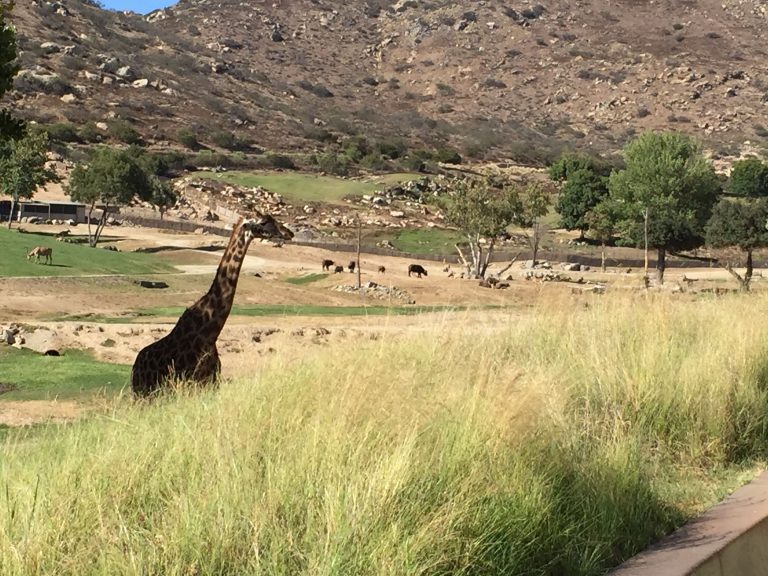
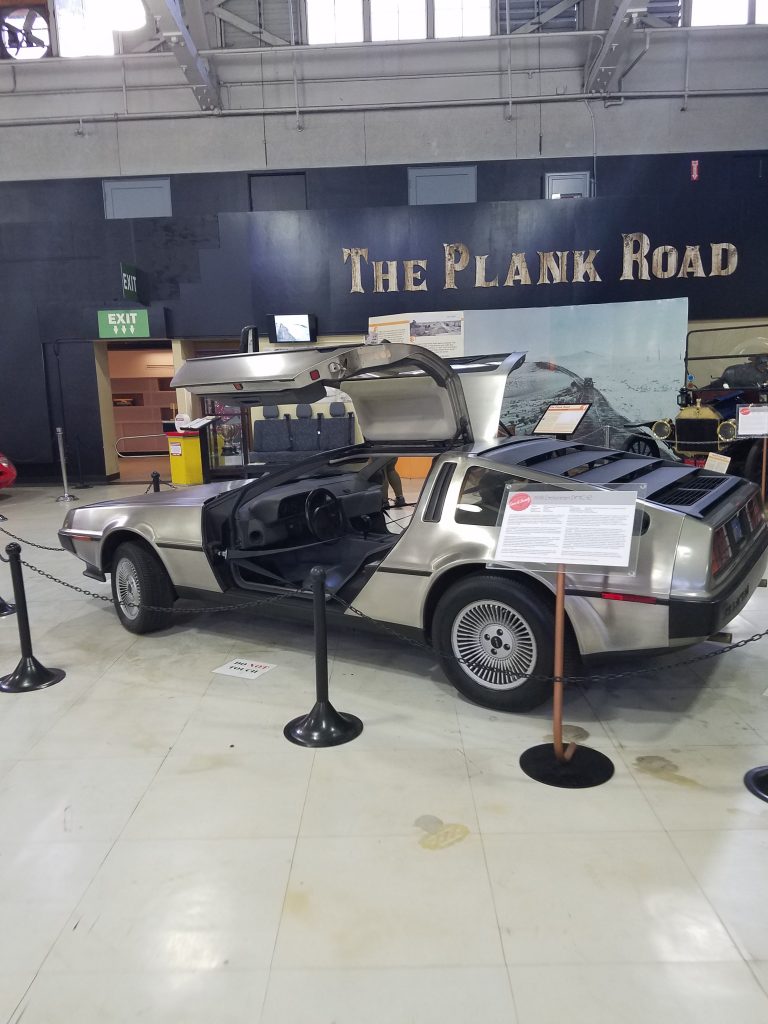
3 Comments
Comments are closed.